KNIT MAGAZINE
- Knit Pattern
Exploring Rolled Knit Edges in Jersey Stitch

- Post date:
- March 19, 2024 07:00
- (Update: March 4, 2024 01:51)
KNIT MAGAZINE

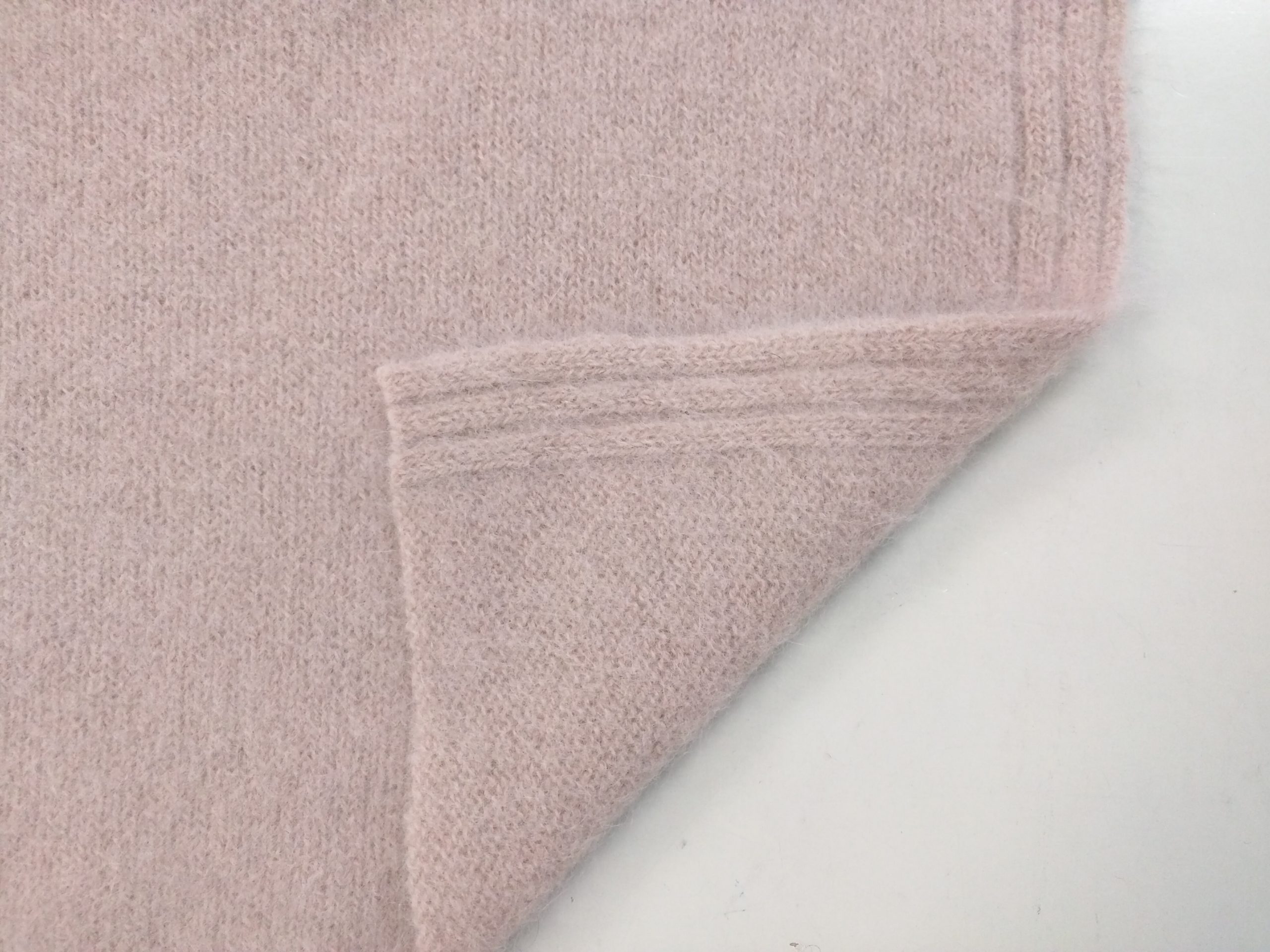
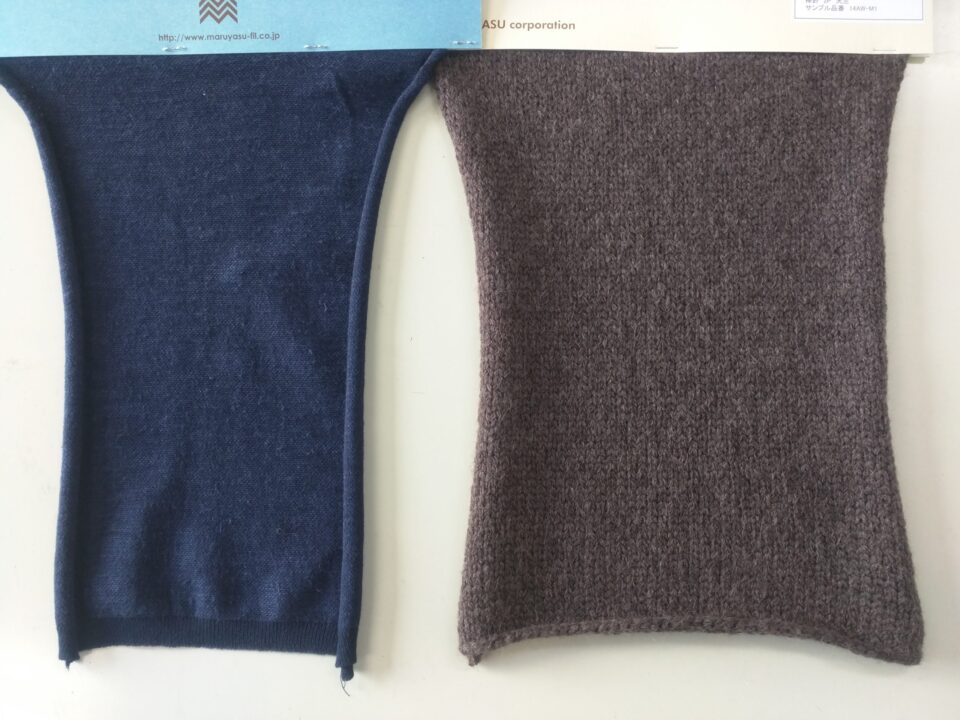
This time, I will write about rolled knit edges. The other day, I received a question from a customer: “What causes the ends of knit fabric to roll up?” The rolling of knit edges is primarily a phenomenon observed in jersey stitch knitted fabric. It’s possible that you might desire to use the selvage edges of the knit fabric for the front end of a cardigan, but they may not stay stable due to rolling, or the ends may roll up when making a slit. Why does this happen? I will explain the reasons and solutions in this article.
Table of Contents
Here, I’d like to explain what it means when the edges of knitted fabric roll up. (I believe various terms such as winding, rolling, curling, etc., are used interchangeably to describe this phenomenon.)
If you’ve ever worked with knits or jersey fabrics, you might have encountered this issue. In general, the edges of jersey stitch knitted fabric tend to roll up.
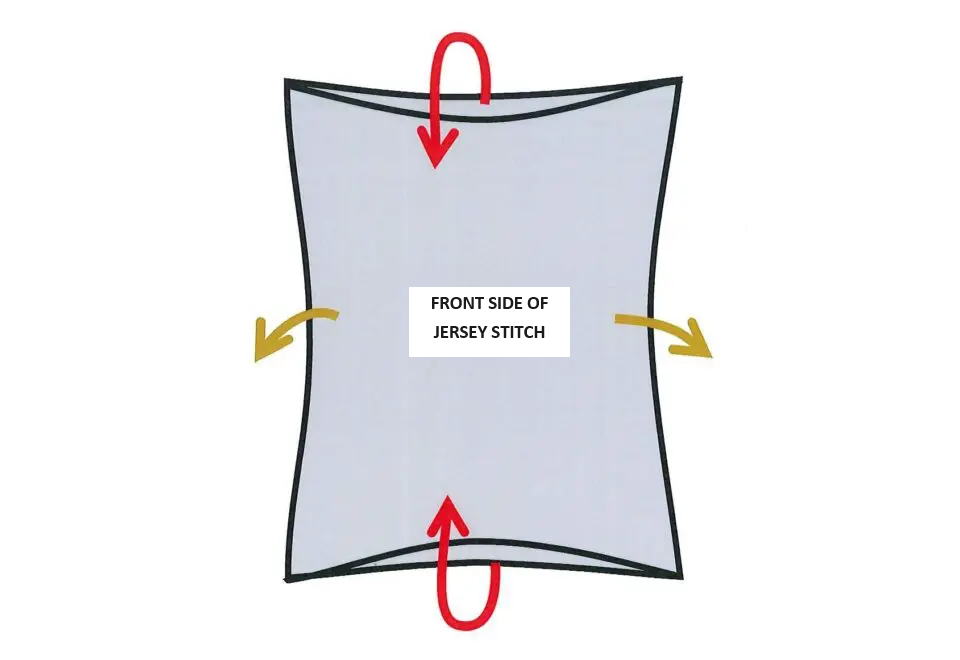
As shown in the illustration above, when knitting or finishing, the straight line direction on the surface of the fabric faces the front side, while the edge of the knit (referred to as the selvage in cut-and-sew) is on the back side, and it tends to roll up. This rolling direction is common for knitted fabrics and is one of their characteristic features.
The method of knitting involves hooking a new loop from the back side onto the previously knitted loop (old loop). The shape of this continuous loop itself is naturally straight, so the direction of applied force remains consistent. As the knitted fabric is formed based on the orientation of these continuous loops, the force applied to the fabric tends to pull vertically on the front side and horizontally on the back side.
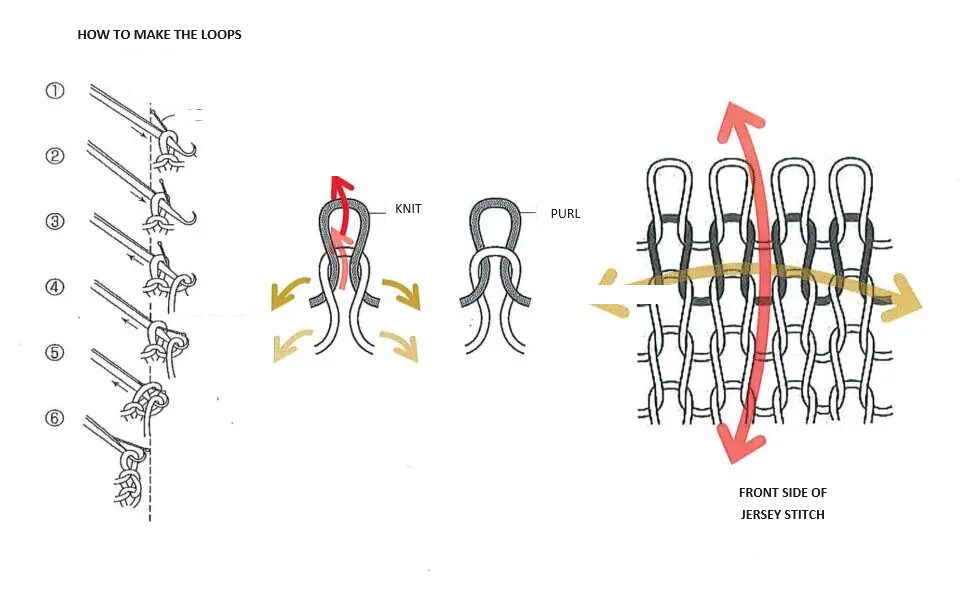
Hence, the edges of knitted fabric naturally roll up because there’s no fabric to counteract the rolling, and when cut, the edges tend to roll regardless of where the cut is made.
As someone who sews cut-and-sew garments, I find it challenging to handle rolled-up fabric edges. In our product handling, it’s advantageous when sewing sweaters, where the edges are sewn and thus don’t roll. However, for flat products like scarves, the edges tend to roll up. To address this, we devise methods to suppress the rolling or adjust through trial knitting.
Here are some methods to prevent the rolling up of knitting edges:
Primarily, since leaving it as is would result in rolling, the key is to create a different structure for the knitting end.
Total needle structure eliminates the wrapping of the knitted fabric on one side, resulting in similar exposure of both the front and back sides.
Commonly used structures include:
・ Full needle
・ Half Milano
・ Bag knitting
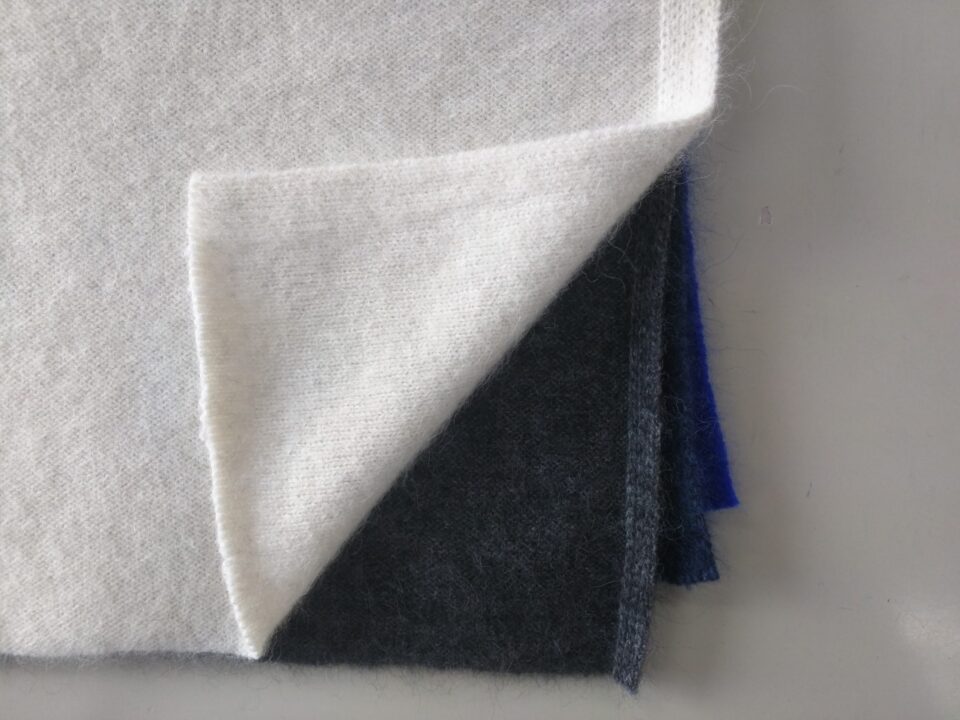
Edge: From the back of Half Milano
Utilize a well-balanced structure depending on the material and design.
The Links and links pattern merges the front and back stitches, aligning them similarly to offset the tension at the edge.
Common examples include:
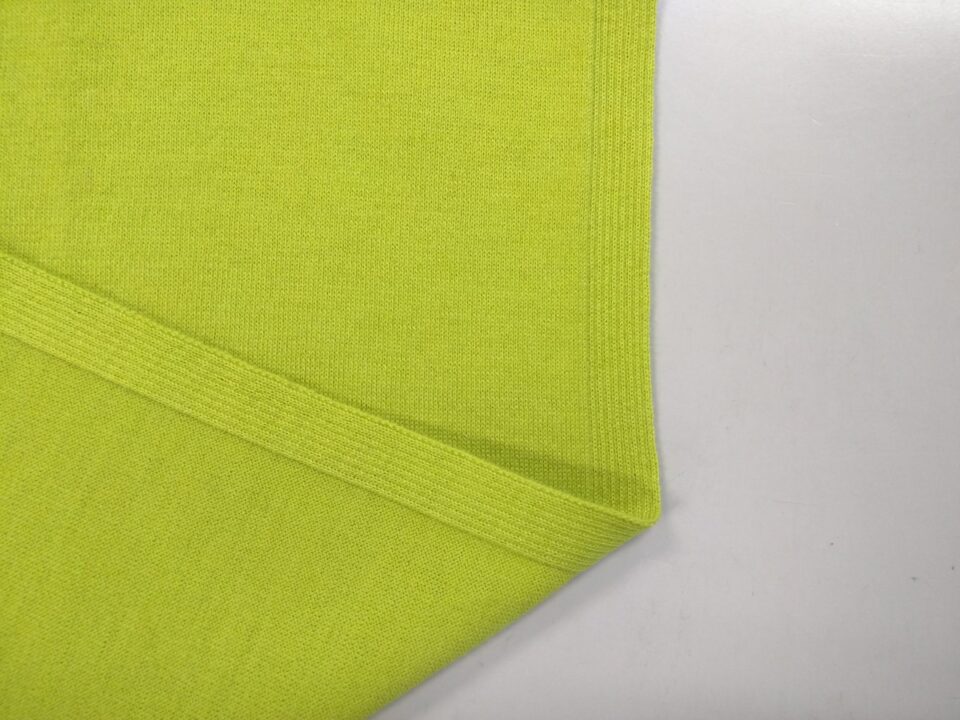
Edge: 1 x 1 rib
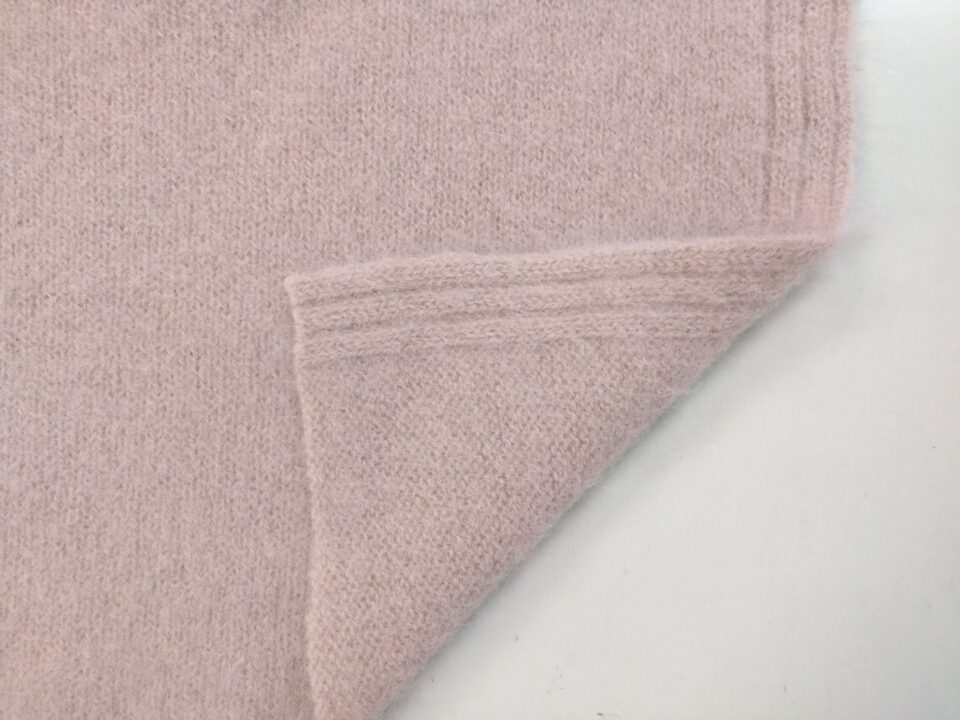
Edge: 2 x 1 rib
Generally, the rolling can be minimized by covering the edges with a tissue, as mentioned above.
If the rolling force is stronger, such as with certain materials or high stretch fabrics, adjustments can be made by widening the width of the tissue or finishing with a set press to ensure a snug fit.
Additionally, the intensity of the rolling force may vary depending on the fabric’s characteristics, potentially leading to changes in texture.
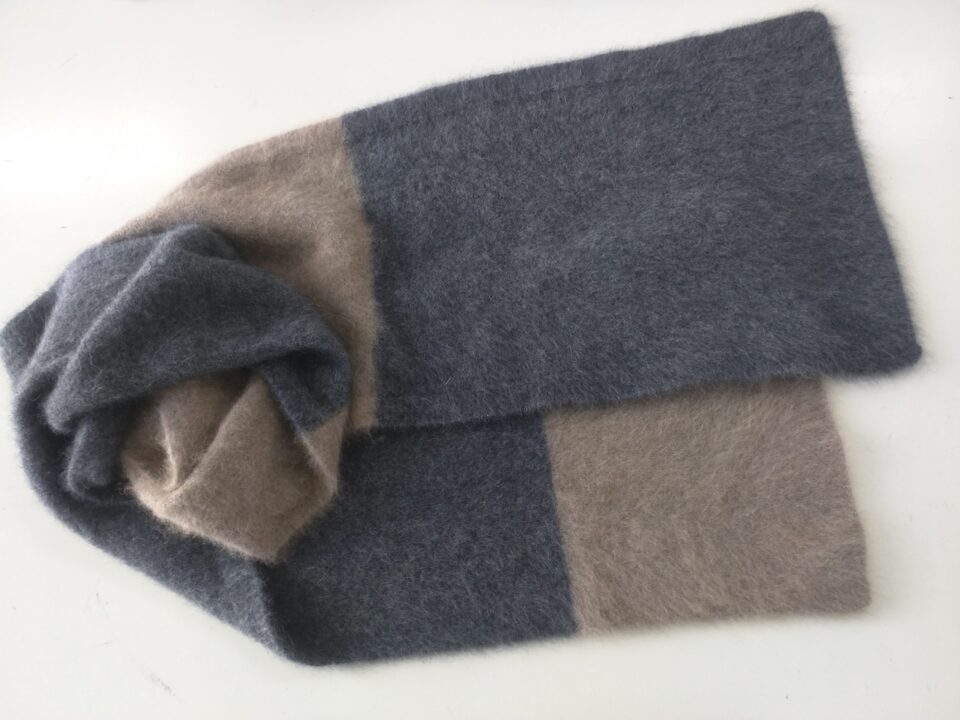
One bag at the end (Half Milano) / Stall created by bag knitting
If you alter the texture of the knitted fabric as described above, it may inevitably curl or break at the boundaries of the texture.
To prevent this:
However, be mindful that such alterations may affect the thickness and appearance of the fabric, so opting for a thicker coating may be advisable.
I’ve demonstrated methods for controlling the sewing process, but another approach worth considering is utilizing a roll.
By rolling the hem, cuffs, collar, etc., a light finish with a very natural atmosphere, resembling an uncut look, can be achieved. This is a unique characteristic of knitwear.
For instance, achieving a collar roll effect is particularly notable.
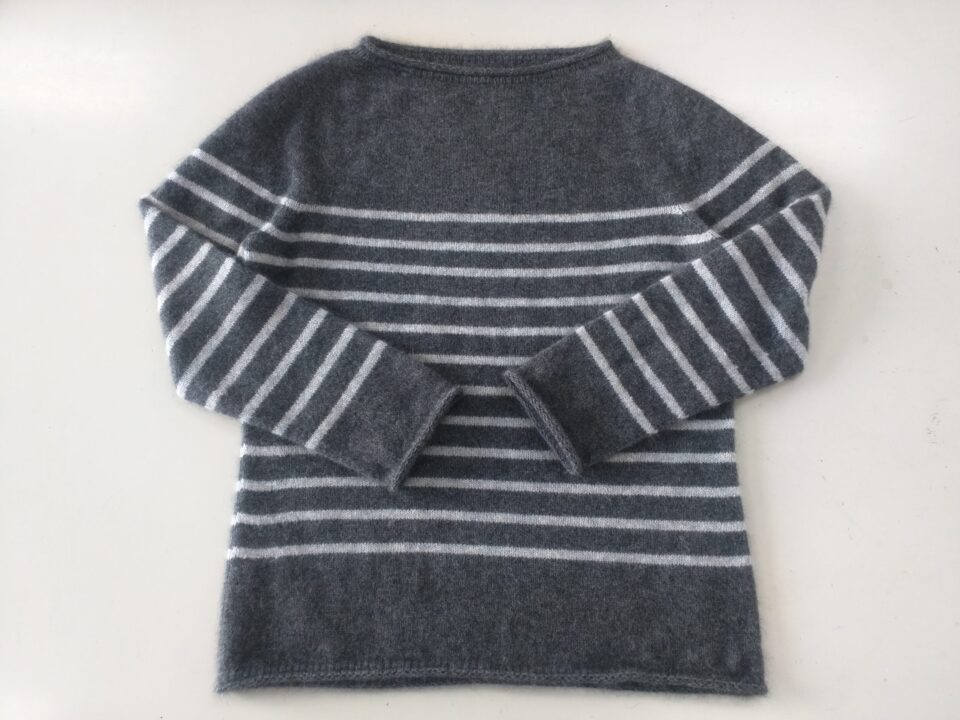
A pullover with a needle-pulling bag knitted on the roll stopper by rolling the ends.
The rounded edges of the knit in jersey stitch can be seen as a design element or addressed through adjustments in the knitted fabric construction to eliminate them.
It would be beneficial to leverage this characteristic in your design planning, recognizing it as a distinctive feature of knitwear.
Furthermore, if you encounter any questions or challenges, please don’t hesitate to reach out to us. We’re here to assist you.
Subscribe Now
To receive the latest updates and insights, subscribe to our newsletter.
Contact Us
For further inquiries regarding this article, please feel free to contact us.